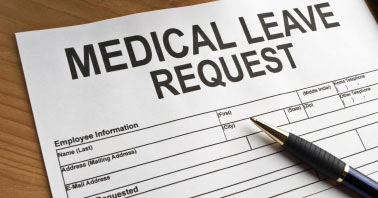
How to Avoid Conflict When You Take a Leave of Absence
People frequently ask:
- What is a good reason for a leave of absence?
- How to ask for a leave of absence
- Can a leave of absence be denied?
- What is a good reason for absence?
- What qualifies for a personal leave of absence?
- How do I ask for time off for personal reasons?
- How many days is considered a leave of absence?
- How long can you take leave without pay?
What qualifies for a personal leave of absence?
Injuries, illnesses, family emergencies, and accidents happen but what if it happens to an employee? Employees in California do have rights when it comes to a leave of absence for particular reasons. The laws that govern leaves of absence in employment are quite complex even with the assistance of a Work Lawyer. There are a few ways though that an employee may be able to avoid conflict at work if they do take a leave of absence. In addition, these ways of avoiding conflict may also give insight to individuals who feel as though they have been wrongfully terminated because they took a leave of absence and want to hire a Work Lawyer. Each employee or former employee’s situation is unique therefore it is important to hire a Work Lawyer should there be an issue at work once he or she took a leave of absence or requested to take one.
Now look at the 5 Ways to Avoid Conflict When You Take a Leave of Absence
- Know how much time you get off for a leave of absence
- Provide a note from your doctor if and when your boss asks for one
- Use the employer’s documents
- Keep the employer and/or Human Resources department in the loop
- Know your employee rights
1- Know how much time you get off for a leave of absence

Employees are technically entitled to a total of 12 weeks off if he or she takes a leave of absence that is recognized by the law. If an employee needs more than 12 weeks, he or she may need to have a doctor recommend this extended leave in writing in the form of an accommodation request. As mentioned previously, the laws in this area are complex and an employee or former employee would need the facts of their situation closely considered by a Work Lawyer.
2- Provide a note from your doctor if and when your boss asks for one

What if my boss requests a note from my doctor? Do I have to comply? If and when an employee puts in a request for a recognized leave of absence, their employer may ask the employee to provide documents from their doctor. An employee is not required to submit a note from their doctor, however, if an employer requests the note then it is required that the employee provide the document. The document(s) provided by the employee’s doctor does not need to disclose any personal information about the employee’s condition, illness, or injury, but it does need to provide what date the employee is expected to recover and return to work. In addition, should the employee wish to return to work, the doctor’s documents should provide any information regarding any accommodation the employee may need while at the workplace. For example, an employee may have been injured in a car accident and suffered a back injury. They may take a leave of absence to recover. The employee’s Human Resources Department may provide the employee with paperwork for his or her doctor to fill out. In the paperwork, the doctor may provide the date on which the employee is expected to return to work as well as some restrictions on the employee’s duties such as not being able to lift a certain amount of weight or the requirement that the employee sits for 10 minutes after every few hours of standing. Here, in this example, the employee’s doctor provided a date for when he or she would return as well as particular details on restrictions and accommodations the employer may need to comply with upon the employee’s return.
3- Use the employer’s documents

Most employers or organizations have their customized forms for their employees to take a leave of absence. These forms are usually for the employee’s doctor to fill out. Even though a doctor can provide a note from their office to your employer, it may be more productive to have the doctor provide their recommendations within the form provided by the employer. By having the doctor fill out the employer’s standard form for leave of absence, the employee may be able to demonstrate he or she complied with the employer during the process of taking a leave of absence.
An employee may request this paperwork as soon as they find out they need to take a leave. Whether it is in a few months or he or she is already on leave due to an emergency, an employee should be as diligent as possible in requesting the employer’s customized form for a leave of absence.
4- Keep the employer and/or Human Resources department in the loop

From the beginning, middle, and end of a leave, keeping open communication with the employer or Human Resources department can be crucial. A leave of absence, depending on the particular circumstances, requires a lot of touches and goes between an employee and their employer. For example, an employee may need to take extra time off after the 12-week mark. Another example may be if the employee can return to work before the 12 weeks is up but will need accommodation upon their return. Open communication between an employer and the employee may aid in avoiding future conflict or miscommunication. Should an employee find himself or herself in a position where they were terminated due to taking a leave of absence, the former employee may be able to use their open communication as evidence that he or she was wrongfully terminated.
5- Know your employee rights

If an employee needs to take a leave of absence or already has taken a leave of absence, he or she needs to know their employee rights. By asking a Work Lawyer questions regarding their rights, an employee may be able to make an educated decision to pursue legal proceedings. A Work Lawyer is the type of attorney who handles employment matters, specifically leaves of absence matters. If an employee or former employee needs legal advice on a leave of absence matter, he or she should seek a Work Lawyer who offers free consultations and only works on a no-win fee basis. An employee taking leave or who already has taken a leave may benefit from knowing their rights regarding a leave of absence because they will know what the law expects of them as well as their employer.
………………………………………..



